InterviewsThe Pursuit of Joy & Fun

An Interview with Photographer and Filmmaker Joel Sharpe
I met Joel Sharpe nearly ten years ago in Puerto Escondido, Mexico. I was sitting on the beach at Playa Zicatela, sanding a freshly hewn wooden handplane and watching those perfectly cylindrical walls of water smash the shallow sandbank. Joel approached, and in that easygoingness so idiosyncratic to Australians, asked what I was up to. He was in Central America hunting surf stories for his first feature-length film, and had just arrived in Puerto. A week later, he and his partner moved into the apartment next to mine. We shared beers and ideas, worked on a couple of short films together in between his own shooting; our friendship was cemented and has been strong ever since.
Joel has also been a long-standing collaborator of Surf Simply; his beautifully coloured and composed photographs have illustrated many an article. But it is probably his film oeuvre that has defined and driven his career the most. Joel’s surf documentary, Las Olas, was awarded Best Surf Film at the Portuguese Surf Film Festival in 2016 and Spirit of Surfing Award at the Bells Beach Surf Film Festival in 2017; his short-film, Rail to Rail, won Best Short Film at the Portuguese Surf Film Festival 2014, as well as Audience Award at the Santa Cruz Surf Film Festival 2014. To say nothing of his other independent shorts and wide range of client work.
Now a resident of Phillip Island, Australia, and finding his feet in fatherhood, Joel has embarked on yet another creative journey, zooming out from all-things-ocean to encompass all-things-conservation. If one looks close enough, though, this slant has always been there; whether photographing toucans and seals or filming the local surf scene in Guatemala, Joel’s honest and respectful personality carries over to the things and people he interacts with, quite naturally rendering a touch of conservation to the images he captures. As an admirer of his work, I’m curious to see where this new path will take him. As his friend, I was curious to pick his brain about where the idea came from, where it all began, what he has learned, and what he feels and thinks about [surf] photography and [surf] filmmaking.
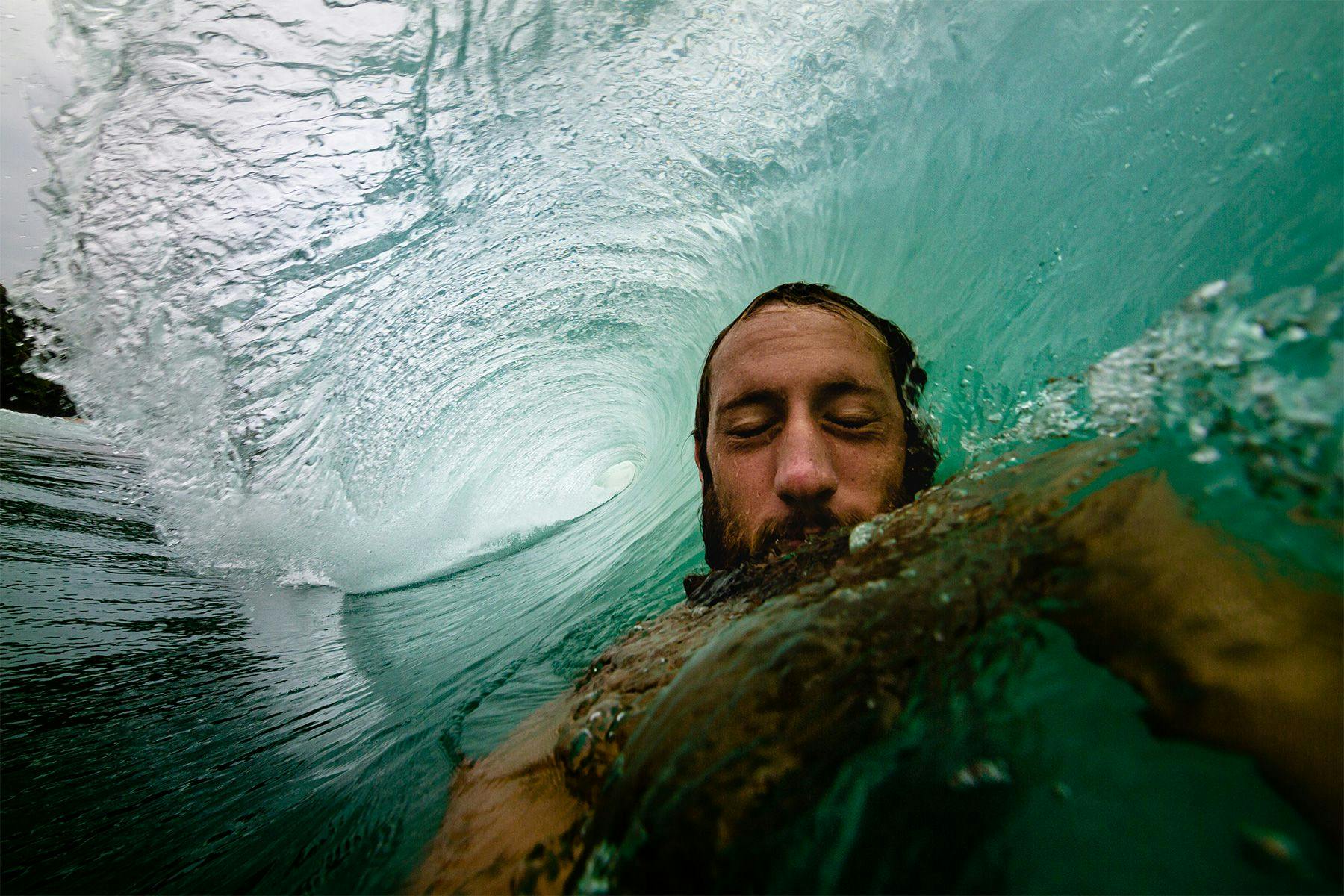
Let’s start at the beginning. What was your first contact with the ocean and surfing?
I grew up in the suburbs outside of Melbourne and didn’t spend heaps of time around the ocean other than school camps or occasional family holidays. In my early teens I took to skateboarding and quickly became addicted to the freedom of exploring the streets and finding stairs to launch off. I loved the feeling of watching the sunset glow, cooling down from a sweaty session, flying down a good bit of pavement, passing houses and cars… Then one summer, when I was about 15, my older brother and I stayed down on the surf coast with some friends and through them we were properly introduced to the boogie board. I was hooked immediately. It was like skateboarding times a thousand. To this day I remember that summer; it felt endlessly full of enormous, perfect waves, my brother and I just rolling around in the water. I knew then I had to learn how to surf.
And what about photography and filmmaking?
Around the same time, my best mate lived five houses down from me. His family had a little handycam, and we’d make these little comedy sketches “in camera” since we had no way to edit. Of course that bled into filming ourselves skateboarding or whatever else we were getting into. The more time I spent down the coast, meeting people who’d teach me where all the good waves were and going on adventures, the more I fell in love with the ocean and the epic landscapes. Like skateboarding, I’d fallen in love with that sunlight glow – but instead of houses and cars it was backlit waves. The way it danced on a glassy sea and cast shadows over dimpled sand…it was my love of these sights, these moments, that inspired me to try to capture them on tape. The first real video I made was a surf video – and the rest is history.
Fast-forward several years from that first surf video… When did filmmaking start to become a job? And how did photography get into the picture?
My first real job in video production was straight after I finished my film/television university degree. It was this crazy shoot where these guys hired me as their B cam (second camera operator) to film a pilot for their series, an off-road travel, spearfishing, and cooking show. I thought I’d hit the jackpot: seven weeks travelling up the coast of Western Australia, free diving on spectacular reefs, eating fresh caught seafood and living out of a tent. But to be honest, it quickly descended into seven weeks of hell! So early on I learnt it’s not just the project that matters, but the people you do it with. I think that experience prompted me to want to shoot my own films.
I started to get into photography while travelling. My partner and I had saved up a bunch with the dream to spend a few years travelling around the world. My plan was to have a bag full of video gear and make videos along the way whenever inspiration struck. I quickly found that we were going to all these amazing places, but shooting videos was cumbersome and didn’t quite seem like the right way to capture it. My main camera was a DSLR, so I started flipping it over to photo mode and started taking photos instead. It’s funny, because you’d think the transition would be simple, when you already understand how cameras work. But I was so appalled by how bad my photography skills were that it became crucial that I improve them.
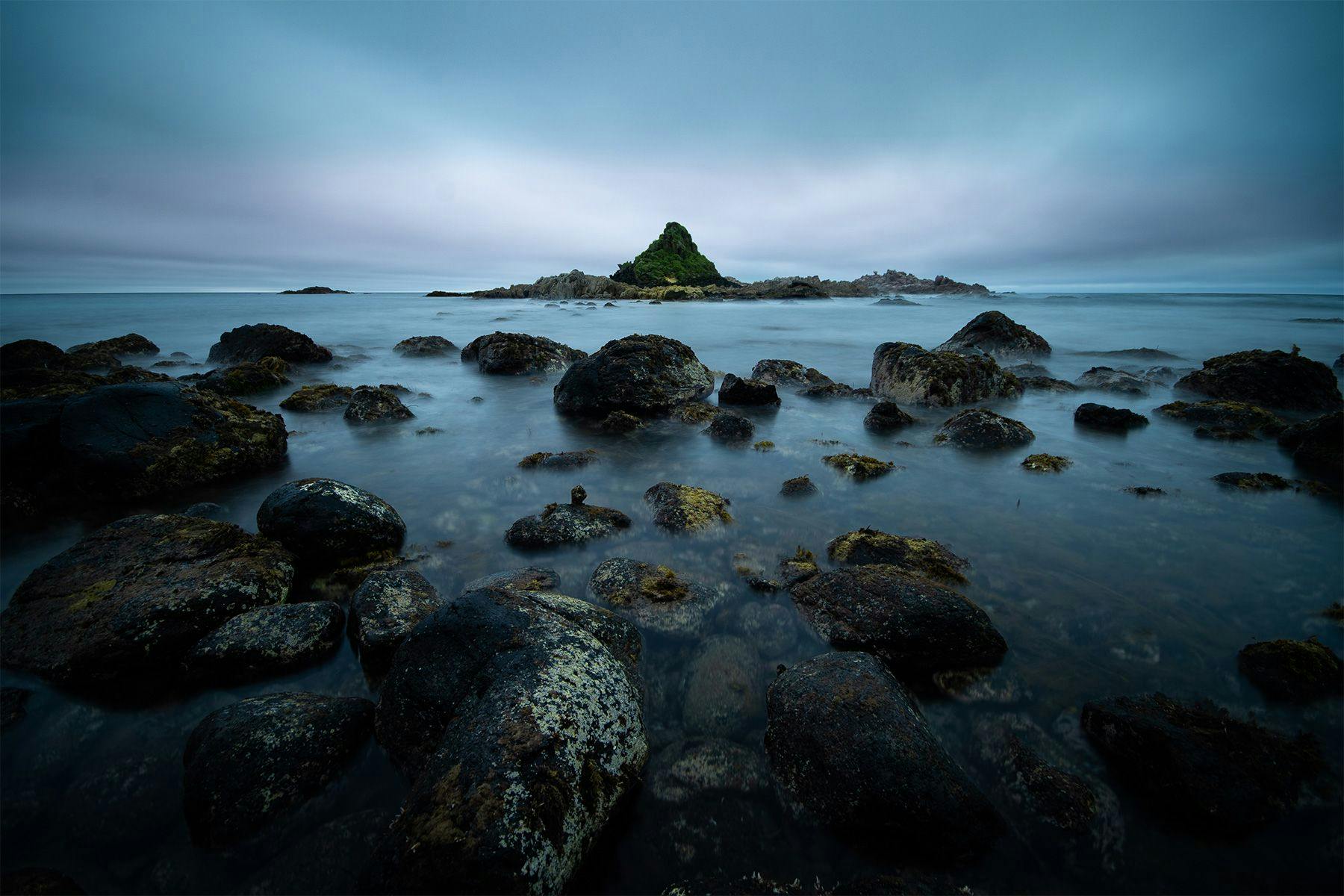
When we met, you and Skye were travelling through Central America documenting surf stories from different parts of the continent, in what would eventually become your first feature-length film, Las Olas. How did this idea come to be? And what were the biggest challenges and rewards in the process?
When we arrived in Guatemala, it struck me that although the neighbouring countries Mexico and El Salvador were riddled with world class waves, little was said about the surf in Guatemala. That alone gave me the feeling that there would be a story there. So we headed to the coast to hang out and see what was happening. What we discovered was the most beautiful little scene of local surfers, mostly kids, with a surf club, riding broken boards and having the most fun in the world, and I thought it would be the ideal place to shoot a short film. I would shoot in the water and then all these kids would come visit the cabañas we were staying to watch the footage back. They were so stoked to see themselves surfing, laughing and slapping each other on the back.
But I realised it was going to be very difficult to make a film without speaking Spanish, because I had no idea what they were saying to me! We already started Spanish lessons in the city of Antigua, so we headed back to continue with that. So what started as a simple idea to shoot a short film turned into this mission to learn a new language, just to be able to communicate with the people I wanted to film with. We went back and forth to the coast a bunch over that time to film our mates by the sea – and that’s where the film started. And I thought that’s probably all the surf film I needed to make. But when we travelled to a beach in El Salvador, where I had planned to edit what I’d shot in Guatemala, I was sitting in a hammock with my laptop open when my partner said “Hey, that guy is standing up on a boogie board.”And just like that, the idea to make Las Olas was born.

Am I right in saying that this was a fully self-funded project? If so, how would you sum up the experience of going out on a limb to make your own surf documentary? What were the main things you learned from it – both as a filmmaker/director/editor and as a person?
It was a fully self funded project for sure. I was really ready to make something just for me; to follow my own instincts and make whatever film I wanted to make. I think I needed it creatively, but also to get it out of my system. Being self funded had its limitations: I didn’t have the best equipment or the ability to simply chase swells… But it also had its perks. While we were completely out of pocket, it meant we stayed in places for longer and lived cheaply – which resulted in stronger connections and allowed me the time to find the stories I wanted to tell. It was scary to do it that way, mostly because I hoped I wasn’t wasting my partner’s time with it and blowing our cash in the process. And it was a lot to be a director, shooter, researcher, editor. I’d go shoot an interview, understand only half of what was being said, take the footage back and get Skye to translate it (she was better at Spanish than me) then think about what story I had.
The whole project was amazing and taught me so much. Beyond the challenges of filming in difficult environments and learning Spanish was the lesson of getting out of my comfort zone. Previous to making the film, I think I had put a lot of pressure on myself to be really good at filmmaking and in some ways that had prevented me from simply exploring my own creativity. This project was a huge jump in the deep end, but by the end of it, it broke me free from the burden of perfectionism and allowed me to enjoy the journey of filmmaking and trusting my own instincts – and not being too precious when those instincts are wrong. The important thing is to go for it.
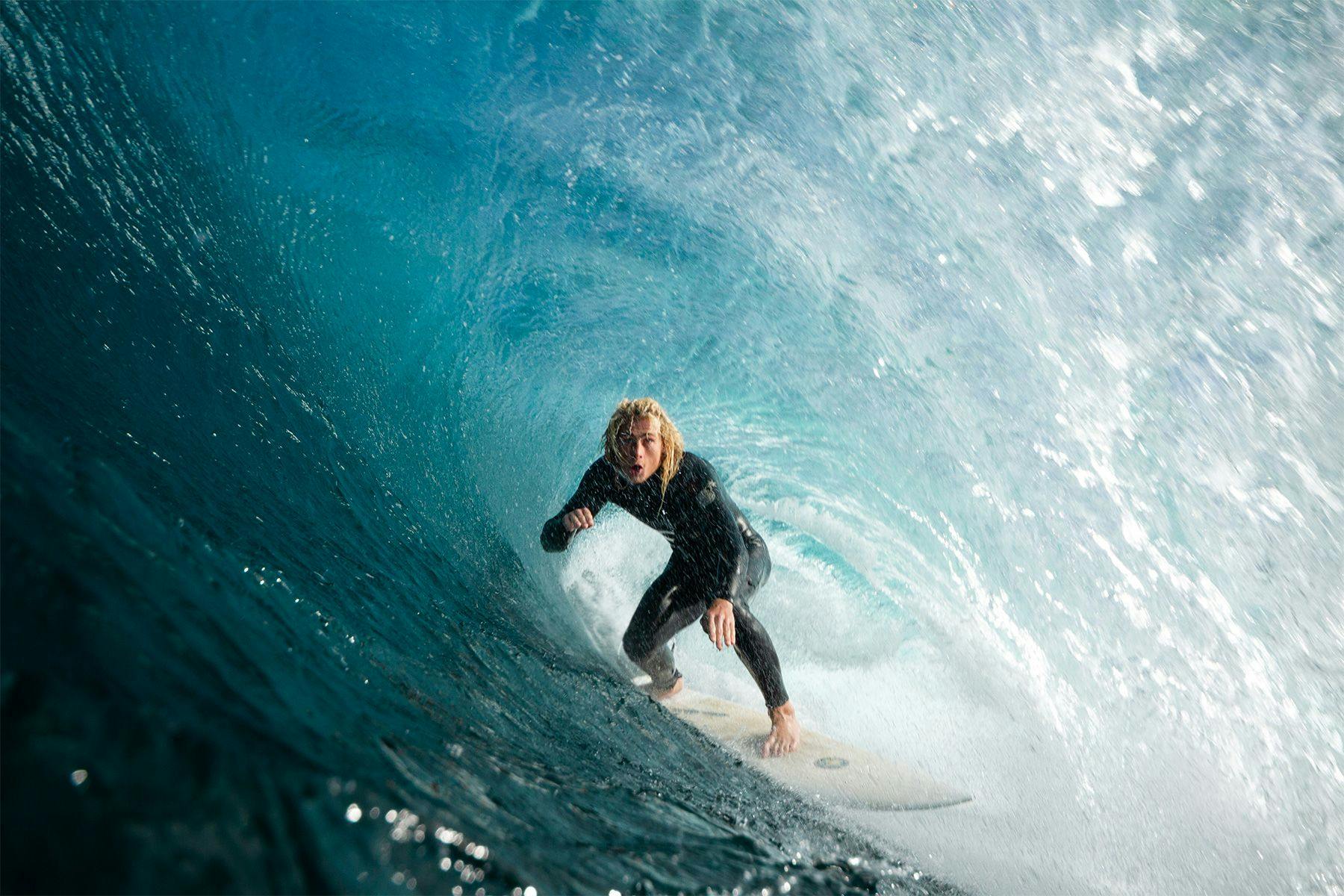
Speaking of self-funded projects… Many surf films we see nowadays – whether features, short clips, or vlogs – are backed by sponsors and produced with an end in mind, namely a subtle advertising mind trick. I would like to hear your thoughts on the surf film industry at large. What do you think it is doing well? And what is it missing?
I don’t feel super qualified to talk about the surf film industry at large, really. I have loved films recently that explore stories from women like ‘Girls Can’t Surf,’or ‘Learning to Drown.’ It’s 2022 and I can’t believe hearing stories from women is revolutionary – it should just be the norm! So I guess that’s a great example of perhaps the industry being a bit one dimensional. That said, surfing is often talked about in relation to joy. Perhaps it’s marketing, perhaps it’s just the way surfers tend to feel. Either way – isn’t that special? Joy. It’s so basic but so great. The pursuit of joy and fun in something is more uncommon than perhaps it should be.
Still on the topic of self-funded projects… We all know – or can imagine – what the upsides of having a decent budget, a film crew, and top-notch filming equipment are. But, in your opinion, are there downsides to such a huge number of high-production surf films and clips floating in our feeds?
I do think the downside of a decent budget, in the surf world at least, is that the money is coming from somewhere or someone with their own agenda to push or promote. That has the potential to limit the spectrum of stories/storytelling that’s possible. You start to hear from the same voices or the same perspective on and on; you miss out on the richness of whatever other stories there might be to hear/be told. That’s not to say there isn’t some brilliant stuff being made; there absolutely is. But creative freedom is a potential untapped source, and I wonder how many untold stories are lying in notebooks under the bed that belong out in the world.
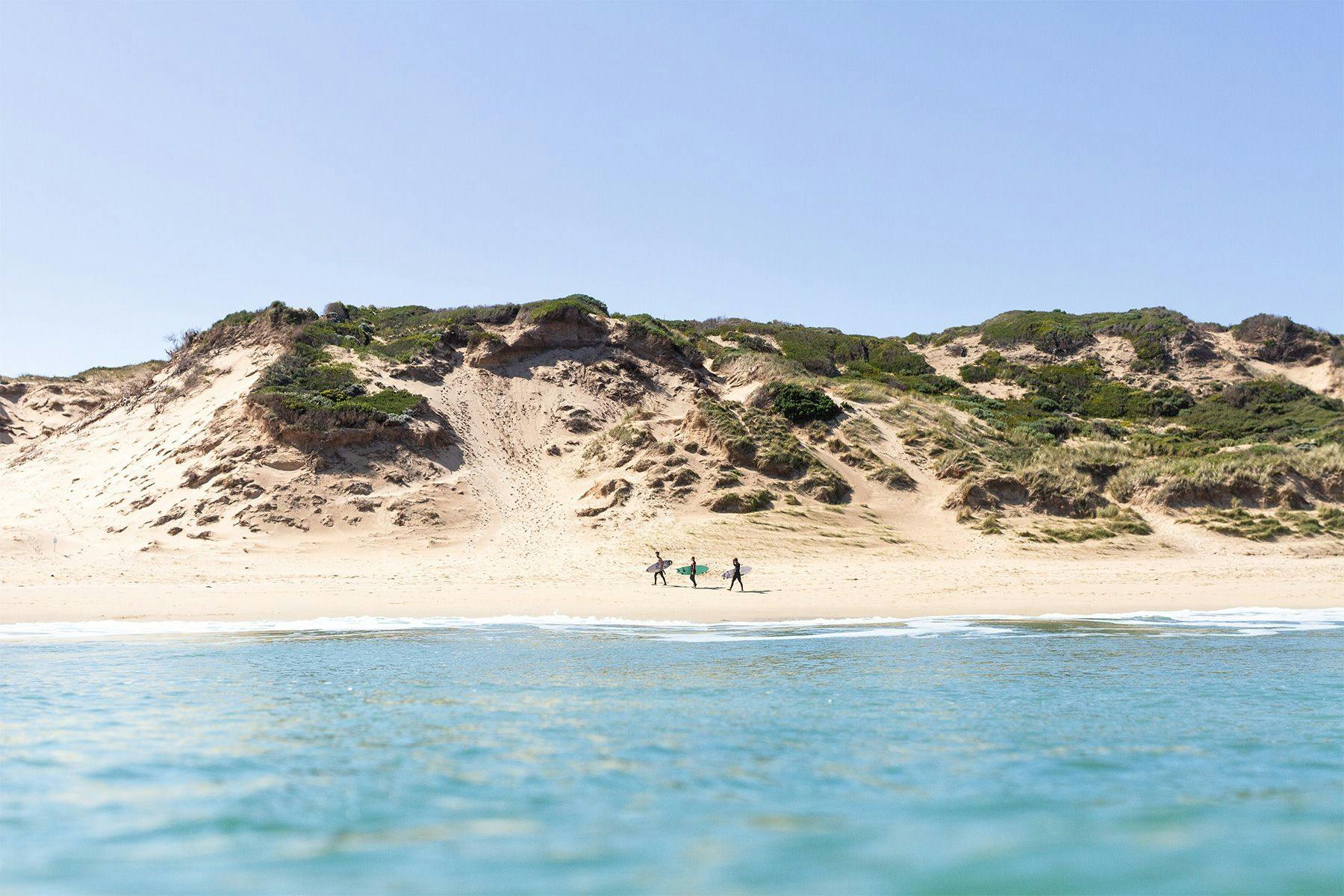
You have also been involved in more commercial projects with brands like Mercedes Benz Australia and MSNBC. What were some of the main differences between working for these clients and working on your own surf-related projects?
Commercial projects are driven by specifics: you’re handed a narrow brief, you have a deadline and you have a budget. Those three factors make things fall into place pretty quickly! When I’m working on something for me, I end up with notebooks full of ideas, half scribbled and tangents connected to tangents and so on. Still, time plays a big role in both scenarios. On the one hand, a short time frame has an energy to it and you can get an amazing amount done. On the other hand, a longer time frame allows ideas to mature and for creativity to evolve. I love working in both scenarios, but I do long for ways to meld the two together more often.
A lot of your client work involves editing – an often unsung skill. How is your “relationship” with editing? And how important do you reckon it is in the making of a great film – whether a feature, a documentary or a short commercial?
I love editing. Out of the whole filmmaking process, it’s my favourite part of all. Everything comes together in the edit – all the work, all the planning, all the shooting is boiled down into the final piece. You get to rediscover all the material (if you’ve shot it yourself) and look at it through a different lens. Or you’re on a journey of discovery, finding these little gems that spark inspiration. It’s where I feel at my most creative, for sure. In fact, I’ve always felt like it’s where the film/video is actually made. Like, you can shoot a bunch of great stuff, but then if you’re not editing, you’re missing out on the magic moment when those beautiful shots are given meaning as they blend with sound, voice, time and it all just falls into place.
Editing is important for obvious reasons; without it, you don’t have a finished piece. But within that there are levels. Commercials are often scripted and planned so precisely, there’s not much wriggle room in the edit. But documentary editing is a whole other beast. Documentaries usually have an over abundance of material that has been captured; the directors and shooters have gathered as much relevant stuff as they can, constantly looking for a narrative as the story unfolds. The editor sits down and watches every single second of that footage and then begins the work of creating a film out of it. They often see things differently because they haven’t been on set. They aren’t swayed by the effort it took to capture a moment or how that moment felt to the filmmakers. They see only the footage and decide what the story is. It’s said that documentaries are ‘made in the edit,’ and personally I find that exciting.
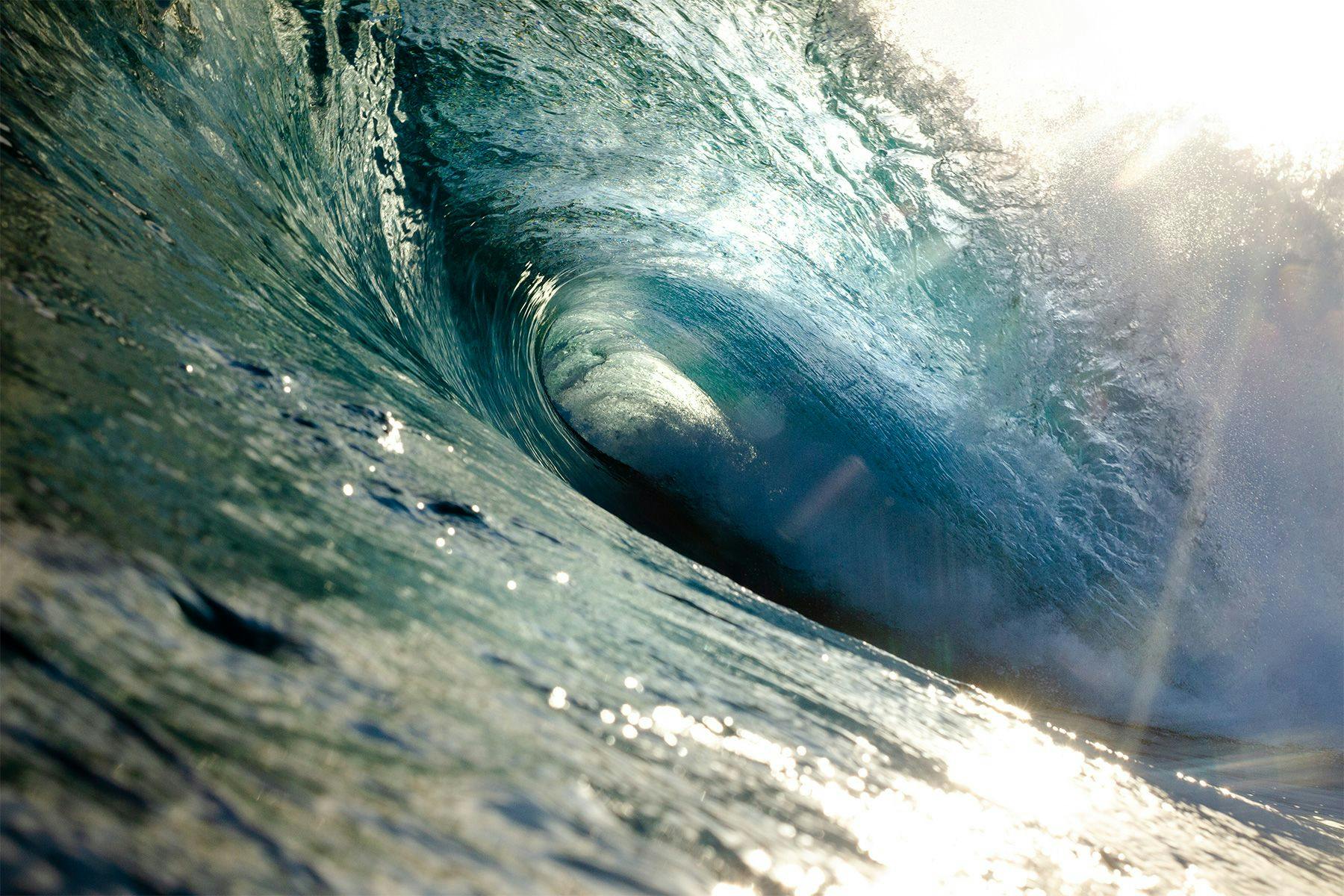
Let’s shift gears a bit: What equipment do you use – both in and out of the water? And how has it changed over the years?
My personal equipment is two Sony mirrorless cameras – an A7III for photography and an A7SIII for video. For the work I do, they do a great job and are versatile. The A7SIII goes into a Salty Surf Housing and combined with a fast prime lens (with pretty amazing autofocus), it’s a great setup. These aren’t my dream cameras, but I find more and more the need to be versatile, and they fill that need quite well. Then when projects call for it there’s a plethora of camera bodies and lenses ready for hire when needed
When I first started making videos, cameras were scarce and digital cinema cameras weren’t a thing. So it was either a “mini dv camera” or a “film camera” with little in-between; you were lucky if a family friend had a family camera you could borrow. Now there are so many amazing cameras out there for relatively cheap. Phones are even a great resource for capturing footage. So opportunity is everywhere.
When I was going through university, the idea that you’d use auto-focus was a huge no no. Whereas now it’s actually reliable and oftentimes the best choice for the moment. So technology has changed and it puts powerful tools in your hands.
Readers of Surf Simply will already be familiar with your amazing underwater photography. What are some of the main things you’ve learned over the years of shooting underwater – both waves, surfers, and animals?
Shooting in the water is a true joy, I wish I did it more often at the moment. It’s the sort of thing that feels clumsy out of the water, as there’s all this prep required: checking the camera for sensor dust, camera settings, cards, battery, putting the camera in a housing, making sure the O-rings are clean and ensuring no leaks… But once you hit the water, the worries back on land disappear and you’re free to explore, glide and immerse yourself in that environment. Creativity becomes just as fluid; there’s so many elements to work with, you’re a part of the watery world. I love it because it feels like all my skills are being put to use in a single moment. Navigating currents, tides and waves. Working with light, watching for composition. Approaching animals with curiosity and, if done right, they invite you into their secret world.
I’ve learnt that preparation is important for all that to happen; calmly and intentionally getting the equipment ‘right’ makes for a way better experience when you’re out in the water. I’ve also learnt that the best photos seem to happen when you don’t chase them, but instead be patient and let the waves or the animals come to you – provided you put yourself in the right places.
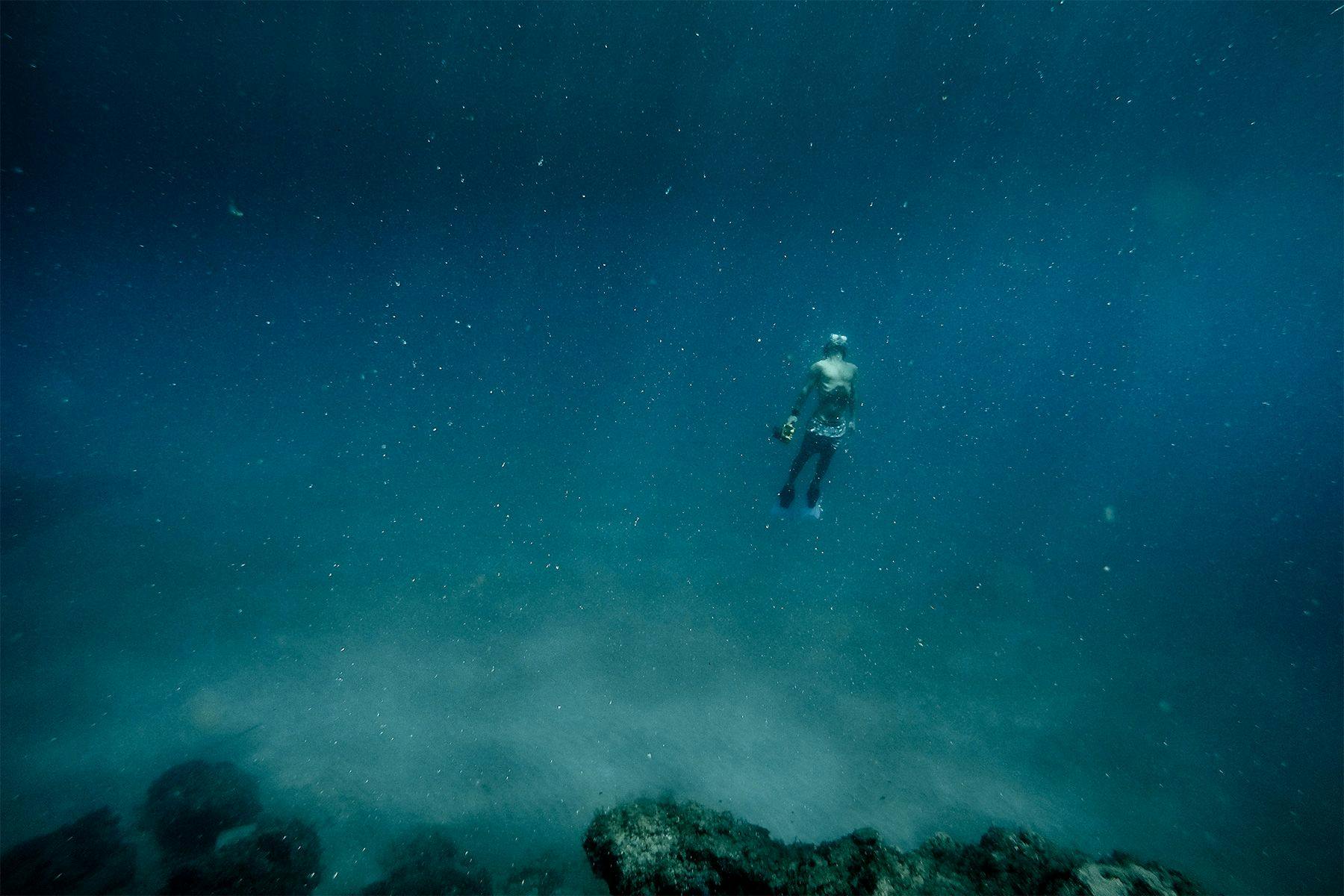
You have recently teamed up with a mate of yours to found WildArk Productions – a production company focused on conservation issues. What made you direct your gaze toward this niche?
I came to conservation through a) a fascination with animals and b) through seeing the work my partner does. My partner Skye works in conservation and I’ve witnessed her do everything from nursing injured monkeys, sloths, toucans, anteaters, etc. in Costa Rica, to live TV interviews talking about Little Penguins in Australia. I’ve seen the importance of this work, and how crucial it is to engage the general population with the ‘wild’ – especially in the face of our rapidly changing environment.
I think there are so many amazing stories coming out of the conservation world, too. People who have dedicated their life to research, or to a cause. There are examples of massive group efforts to create change; like on Phillip Island where I live, a whole suburb of houses was bought back by the government to be returned to the wild and therefore save a colony of little penguins. Without these people, we would have lost a lot more than we already have. These are important messages and stories to share and we want to provide a service and be leaders in communicating these things.
With WildArk, you produced a video about the 2019-20 bushfires in Eastern Victoria, Australia, and how they affected the local Yellow-bellied and Great glider population.
In 2019-2020 we suffered some of the biggest bushfires on record, but worst of all was how much land was on fire all at the same time. We were blanketed in smoke, even miles and miles away from the nearest fire, you couldn’t see a hundred metres down the road. Needless to say, this is bad news for our native species.
So in an effort to help our wildlife, WildArk raised a bunch of funds to support research into the effects of bushfires on some key species. We made a few films to talk with the scientists who were awarded the research grants to learn what they were finding. I didn’t even know the Yellow-bellied or Greater Gliders existed before I started work on these projects. Koalas, wombats, kangaroos are the poster animals of Australia, but there are a plethora of amazing species that are rarely talked about or known of. Species like the Greater Glider may be wiped out if we don’t take steps now to prevent it. If you check out the video, you can see that the greater glider is a teddy bear like animal, super cute, and like many species that aren’t known by most people, very deserving of access to healthy habitat to thrive in. We need to take care of our planet and our environment to ensure the future of these animals and our own.
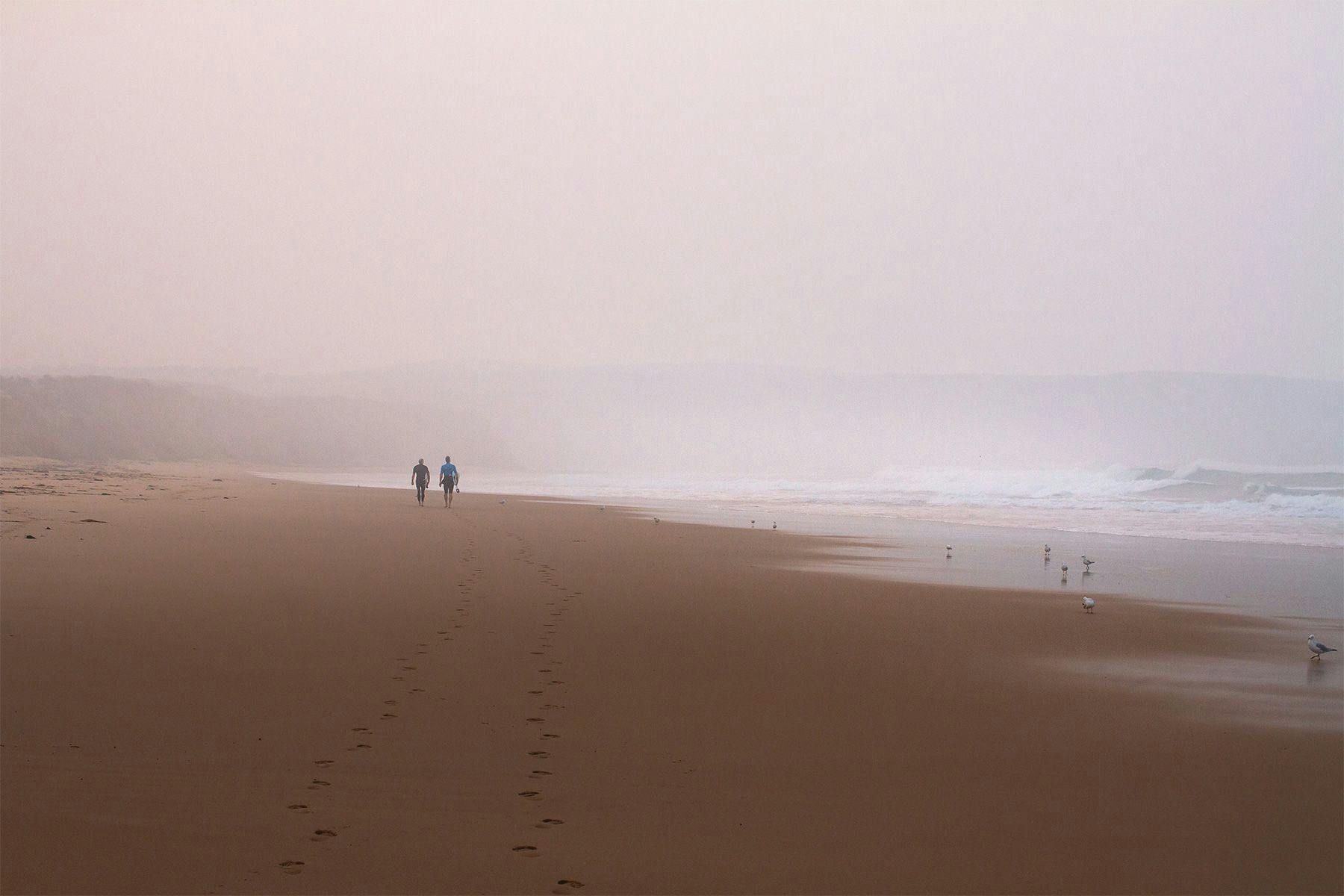
Why do you think it is important to document these issues? Why are you doing what you are doing?
I think it’s important to document these issues and to get the general population to engage with these stories because they affect all of us. Whether you live in a city or you live in a jungle, we are all part of the ‘wild.’ We are all affected by the same weather patterns and a loss in Australia may result in a loss in Argentina or Canada. There is a species of bird, Short Tailed Shearwaters, that nest in Australia but spend some years foraging in the Arctic and they even honeymoon down by Antarctica. That’s an example of how the globe is connected. That is beautiful to me, I think the world is amazing and I want to make films about that.
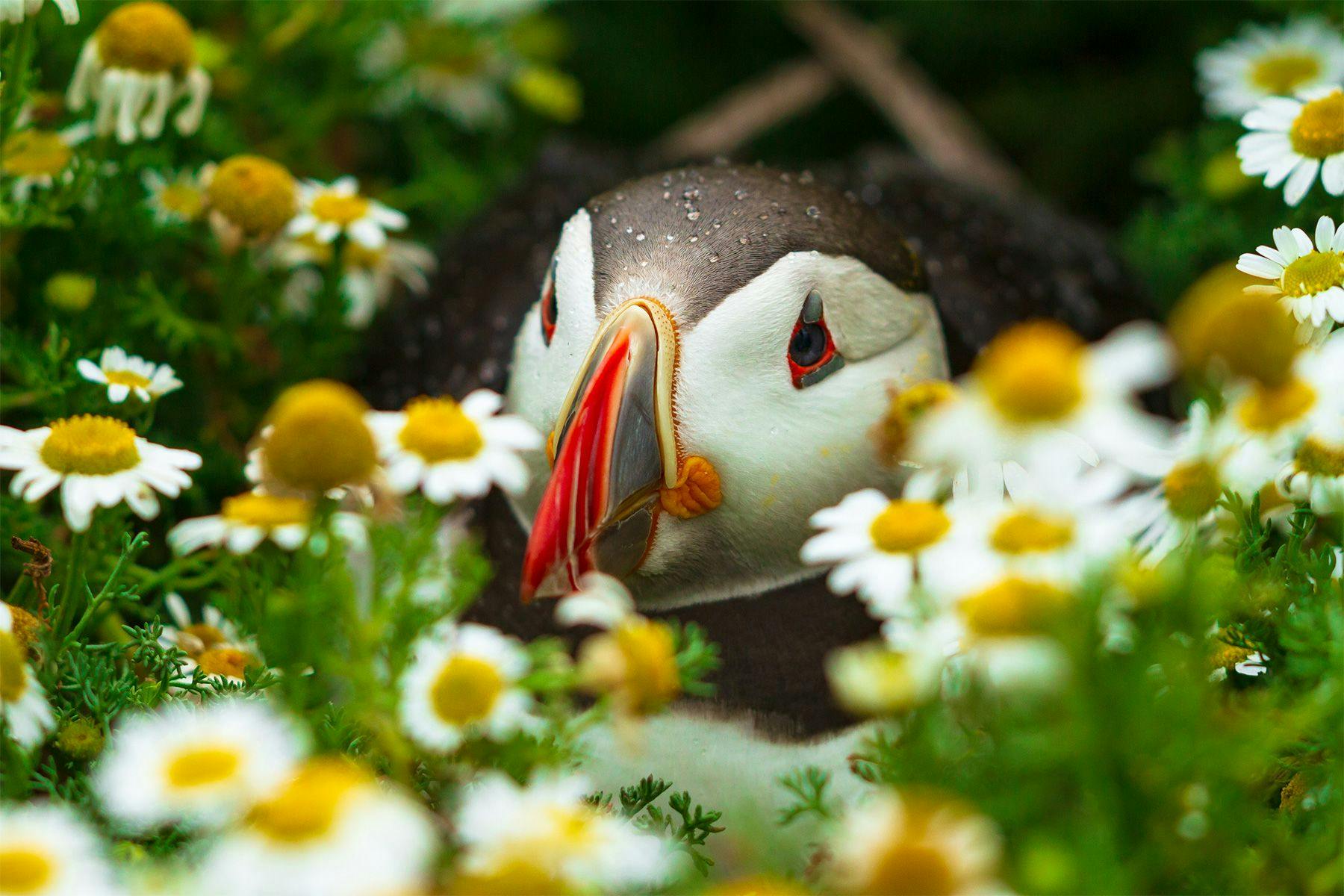
Whilst not all filmmakers have a close relationship with nature, it is safe to say that all surf filmmakers do. In that sense, what would you say are the roles and responsibilities of surf filmmakers in promoting the conservation of the marine environment?
I think when you spend a lot of time around nature and you engage with it ie. surfers and surf filmmakers need to watch the weather, feel the wind and understand the ocean – you can’t ignore its imperative role in our life. I do believe surf filmmakers have a responsibility to promote conservation in the marine environment. When I think about it though, this whole journey I’m on began with an interest in surf filmmaking – so perhaps surfing does its own job enough of engaging people with nature? It’s sewn into the fabric of the thing.
To see more of Joel’s photos and films, check out his website or follow him on Instagram. For more information on WildArk’s conservation projects visit their website or Instagram.